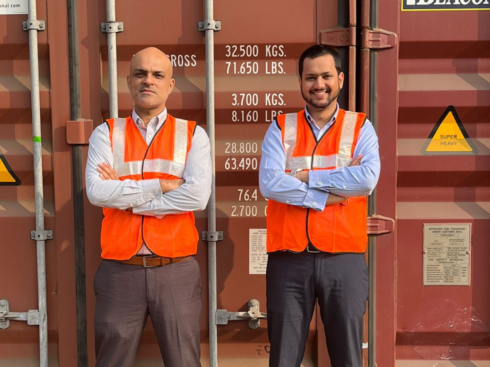
Recently I’d been to Hampi, a sleepy town in north western Karnataka, which boasts of some marvellous stone work spread across the whole district, and there are apparently many more to be discovered. One of the best-known works is a group of rock carved pillars which emanates all the Saptha Swaras (seven musical notes) from Indian music. On my drive back, I was wondering about the effort it must have taken to build such an empire and my thoughts drifted into an interesting analogy.
It took close to 250 years and four generations to complete the main architecture at Hampi, while I had read that a similar architectural marvel at Ajanta caves took 500 years and close to six generations of workers and peasants. That is some persistence!
I don’t know if any of today’s enterprises would see that kind of history. That made me think – If some of them actually last for a couple of centuries, what would drive them to be relevant? Who could be the driver in building such a marvel: the creator or the ecosystem or the investor?
Personally, I think all three are equally important, but this article is an attempt to see the role of an Investor amongst the three.
Sticking With Your Investment
Looking back at those masterpieces, the rulers of that era stayed put as the investor for as many as 500 years. The generations which started it had such a strong and compelling vision that the generations which followed them bought into it! This was a commendable feat for a generation which had to face some of the worst and basic challenges of life, let alone enjoy it.
On the other hand, not all the kings of those times had such a massive vision and most even didn’t feel the need for one.
For example, Mughal Emperor Shah Jahan built Taj Mahal in a short span of 20 years and it just took 15 years for the Red Fort to be built. Ironically, with all our modern day technology, research, and resources; the Chenab River Railway Bridge in J&K is going to take more than 15 years to complete & the Navi Mumbai International Airport is still on paper even after 19 years of idea-conception.
Objectives and Motives Of Investors
Modern startups give a different number for long term investment: for them the best time to get an exit is at 10 years and they apparently exist to exit.
In the current world, no one has the patience and liberty to stay for a couple centuries like our forefathers. Is this word exit a twenty-first-century term that didn’t exist in the past? It is not very likely and what it all boils down is to the objective of investing.
The objectives according to me could be:
1) Immediate returns/creating multiples in a shorter time.
2) For being part of something new that will change the future.
3) For consolidating more power.
These objectives could stand the test of times of centuries and there is nothing wrong in any of the above objectives. But one needs to be clear on his/her priority as an investor. More importantly the project or individual on whom this investment is being made also needs to be aware of their objective and when both of them have a synergised objective is when you get maximum returns.
For example, If AADHAR was an investment with an objective of “Something New” for the earlier government, it falls under the category of “Consolidating power” for the current government. In a nutshell, this project didn’t fail because the investors here had a clear objective.
The objective of Shah Jahan was to build a memorial for his wife at a short time, but also to turn into a never to be replicated masterpiece.
Startup Case Studies
Myntra, India’s largest online fashion store, when acquired by Flipkart, wasn’t going through any bad phase. It is noteworthy that even after an acquisition by the behemoth, competition from Amazon India hasn’t detracted its relevance.
Then why did it get acquired in the first place? It can be posited that the investor was driven by the first objective from the above list.
The story would have been different if they were out there today on their own. And I am sure from what I see at Lenskart, they would as relevant as it is today.
There are many such examples which one can choose from the prehistoric days to government enterprises to private companies. All of them succeeded, not just because they were good/relevant but also because they had an investor whose objectives were spelled/matched and synced.
The difference between an investment in capital vis-a-vis that of others is that the relevance of investor would change along with objective more often in a non-capital investment. The biggest example of this paradigm would be Reliance – the investment for them is proximity to decision makers, according to me.
Tying It All Up
The common thread through all the above examples is that every story has an investor and every outcome has their contributions.
For the outside world, an investor is seen as the villain, when the project bombs and when it succeeds the executor takes the credit. To me, the learning from the above analogy spread across organisations, histories, and geographies is that objectives have to be in sync, then owning the outcomes becomes easier. An investor also swings between objectives from time to time and there can’t be a universal objective for any investor.
As such, when a conflict arises between parties due to a clash in objectives, an en-route correction can also be explored. For example, with the MNREGA, the current government did a course correction which is acceptable. What happened at YepMe, the fashion portal, is also another example where an investor writes off the investment when the company took a course correction in the direction.
How many of us have heard about Ustad Ahmad Lahauri? He is the architect and executor of Taj Mahal and Red Fort. But we only know of Shah Jahan.
In the same context, how many of us know Mark Zuckerberg’s first backer of Mark Zuckerberg, Peter Thiel? People who believed in that vision, because of which the company is what it is today are equally important.
We will only know the people who are in the limelight and the ones who took effort in telling the story. But that doesn’t mean these are the only characters and the story is also not complete without all of them working in synergy.
In summary, investors aren’t a rare species of the 21st Century. They have always existed and always had similar ways of working. It’s only the perspective of the world that has changed.


























